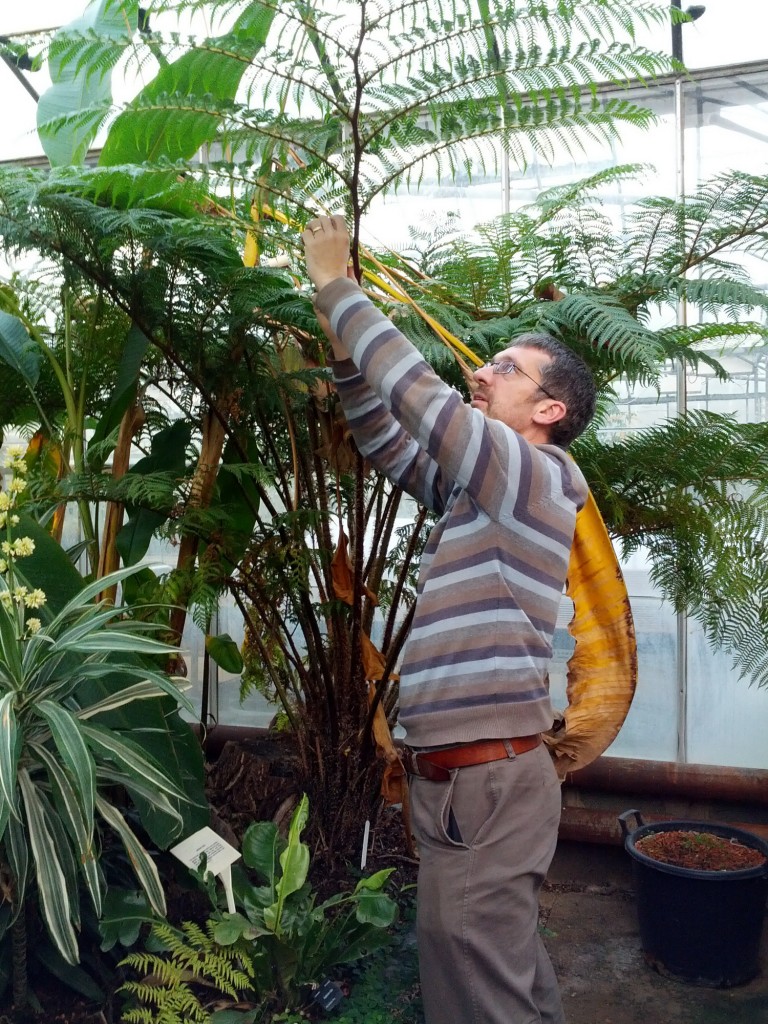This is part of series of blog posts about my work on a science-themed art commission with UoR’s EM Lab. The artwork was inspired by SEM images of tree fern spores. The first two blog posts in this series are on Imagining Science here and here.
Making experimental artwork is a like investigating something new in science; you don’t know what the answer to your research question will be until you do the experiments. Having established what to make EM Lab’s artwork about – Azi Jamaludin’s tree fern spores and their wonderful texture under SEM – didn’t mean knowing what the finished piece would look like. Part of the reason is that I used ingredients in the artwork that were not primarily art materials. And that meant; testing, testing, testing!

Textures from the surface of tree fern material under SEM (imaged by Amanpreet Kaur, EM Lab). Spores collected by Azi Jamaludin stored at RNG
I wanted to include materials used in electron microscopy, and plant material, in the painted areas on the artwork. EM Lab uses graphite liquid as a conductive glue to fix specimens to stubs before placing them in the microscope. I used this graphite liquid to paint with. I also used tree fern spores from the living plant collection. Both these ingredients required a lot of testing before use, and even then had unexpected effects on the artwork.
The graphite liquid turned out to function well as paint – it created beautiful patterns and effects when combined with gold ink, although was hard to dilute. It was like trying to dilute the entire night sky in a cup of tea! The graphite was compatible with other ingredients, the most important of which was the varnish. A small scale test however, did not reveal what a large area of graphite liquid would do; the graphite absorbed the varnish so fast that it caused a powdery appearance in places. This has become worked into the final piece. It’s important to be flexible when working with something new; unexpected things happen and you need to be able to work around them.

A 10cm wide test block of cold press paper on fibre-board, used to create a miniature for varnish testing
The tree fern spores also provided a challenge; the spores harvested from the tropical glasshouse by pressing and drying leaflets from the tree fern in the living collection were not the colour I’d expected. However, the colour was beautiful. So I used spores on white areas, and tree fern leaf hairs applied to clear acrylic. This meant I incorporated a part of the plant that had a rich brown colour into the brown acrylic ink I was using.
The spores themselves were difficult to incorporate into paint, and did not spread well. I tested several media and in the end, used spores suspended in a water-based acrylic media as a glaze. Varnish testing again; adjusting the planned material to include leaf hairs, and the challenges posed by spores, meant testing all the varnishes again. The best varnish for the spores was not my preferred one for the graphite, so a compromise was reached in using a matt varnish that fitted the aesthetic of the piece. I’m happy with the finished piece and so are EM Lab; the piece is now going through varnishing and drying before returning to Reading.
Hopefully this post goes some way to illustrating a shared feature of science and art; repeated experimentation is needed to get the best results… and you should still always expect the unexpected! If you want to make something new, you don’t know how that will look until you actually do it; so be prepared to experiment, adapt your methods, and repeat.


